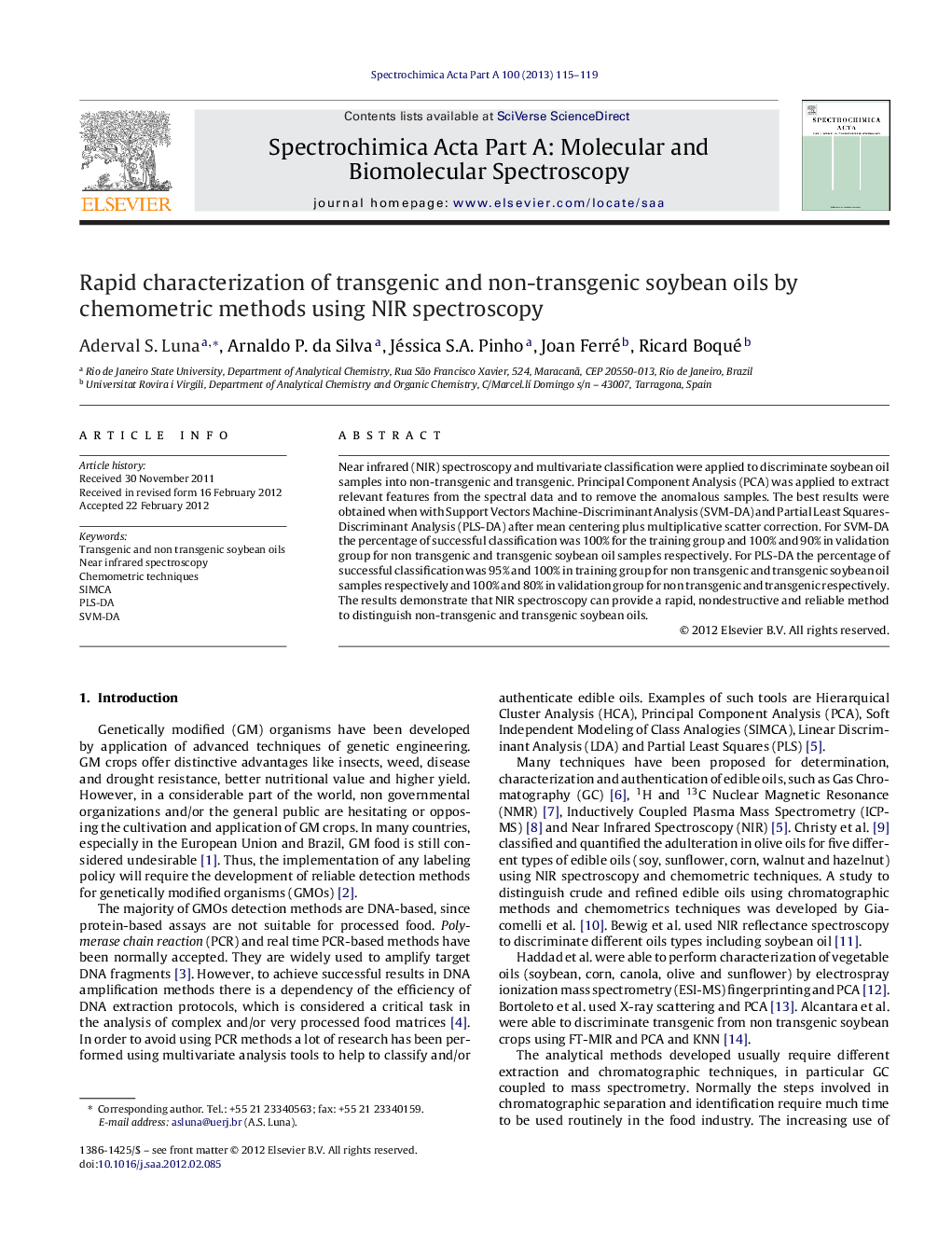| Article ID | Journal | Published Year | Pages | File Type |
|---|---|---|---|---|
| 1230945 | Spectrochimica Acta Part A: Molecular and Biomolecular Spectroscopy | 2013 | 5 Pages |
Near infrared (NIR) spectroscopy and multivariate classification were applied to discriminate soybean oil samples into non-transgenic and transgenic. Principal Component Analysis (PCA) was applied to extract relevant features from the spectral data and to remove the anomalous samples. The best results were obtained when with Support Vectors Machine-Discriminant Analysis (SVM-DA) and Partial Least Squares-Discriminant Analysis (PLS-DA) after mean centering plus multiplicative scatter correction. For SVM-DA the percentage of successful classification was 100% for the training group and 100% and 90% in validation group for non transgenic and transgenic soybean oil samples respectively. For PLS-DA the percentage of successful classification was 95% and 100% in training group for non transgenic and transgenic soybean oil samples respectively and 100% and 80% in validation group for non transgenic and transgenic respectively. The results demonstrate that NIR spectroscopy can provide a rapid, nondestructive and reliable method to distinguish non-transgenic and transgenic soybean oils.
Graphical abstract. Near infrared (NIR) spectroscopy and multivariate classification were applied to discriminate soybean oil samples into non-transgenic and transgenic. Principal Component Analysis (PCA) was applied to extract relevant features from the spectral data and to remove the anomalous samples. The best results were obtained when with Support Vectors Machine-Discriminant Analysis (SVM-DA) and Partial Least Squares-Discriminant Analysis (PLS-DA) after mean centering plus multiplicative scatter correction. For SVM-DA the percentage of successful classification was 100% for the training group and 100% and 90% in validation group for non transgenic and transgenic soybean oil samples respectively. For PLS-DA the percentage of successful classification was 95% and 100% in training group for non transgenic and transgenic soybean oil samples respectively and 100% and 80% in validation group for non transgenic and transgenic respectively. The results demonstrate that NIR spectroscopy can provide a rapid, nondestructive and reliable method to distinguish non-transgenic and transgenic soybean oils.Figure optionsDownload full-size imageDownload as PowerPoint slideHighlights► NIR spectroscopy and chemometric tools were used to discriminate soybean oil. ► Results show that NIR can provide a reliable method to distinguish soybean oils. ► Compared to traditional method (PCR), molecular spectroscopic is more effective.
